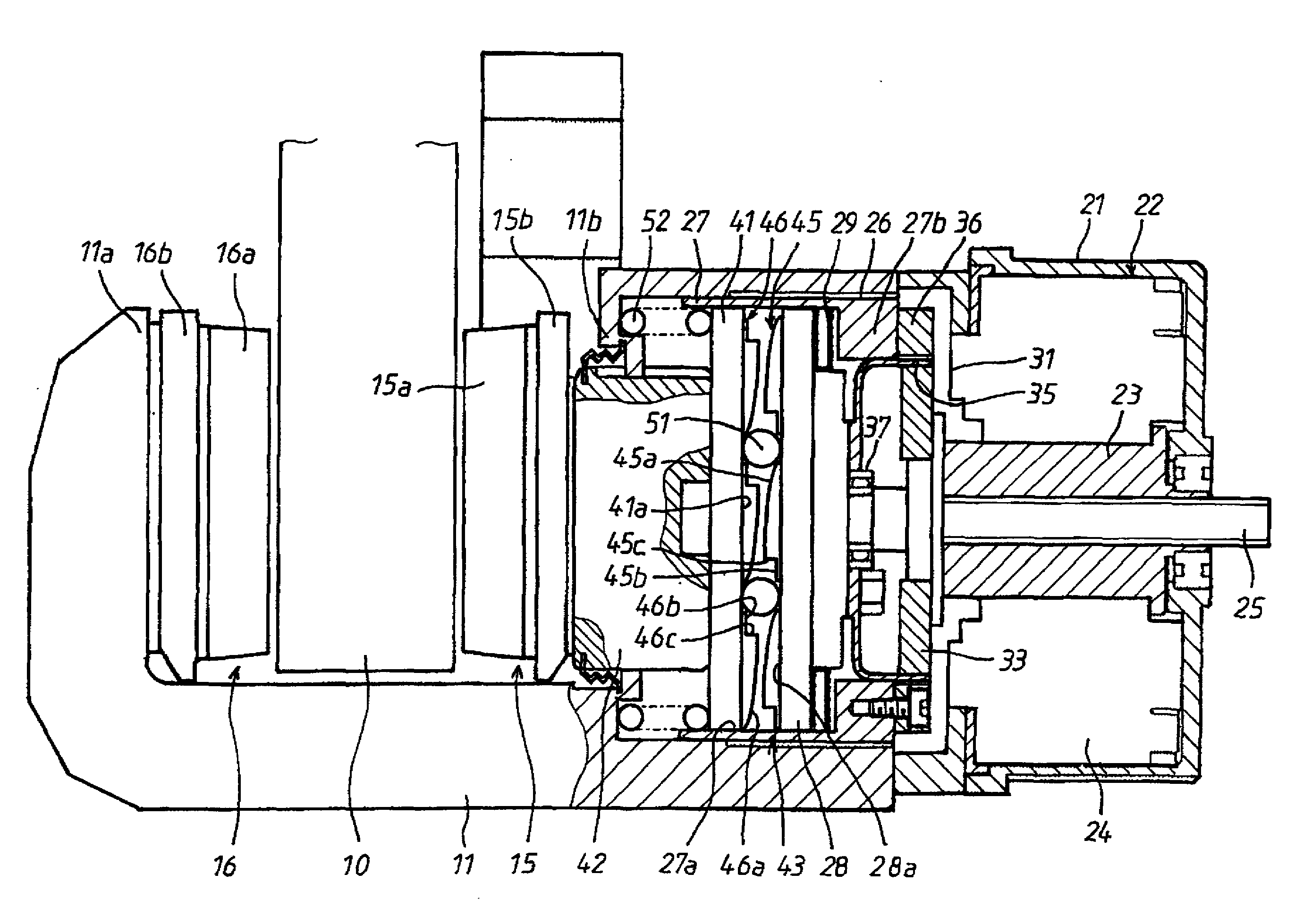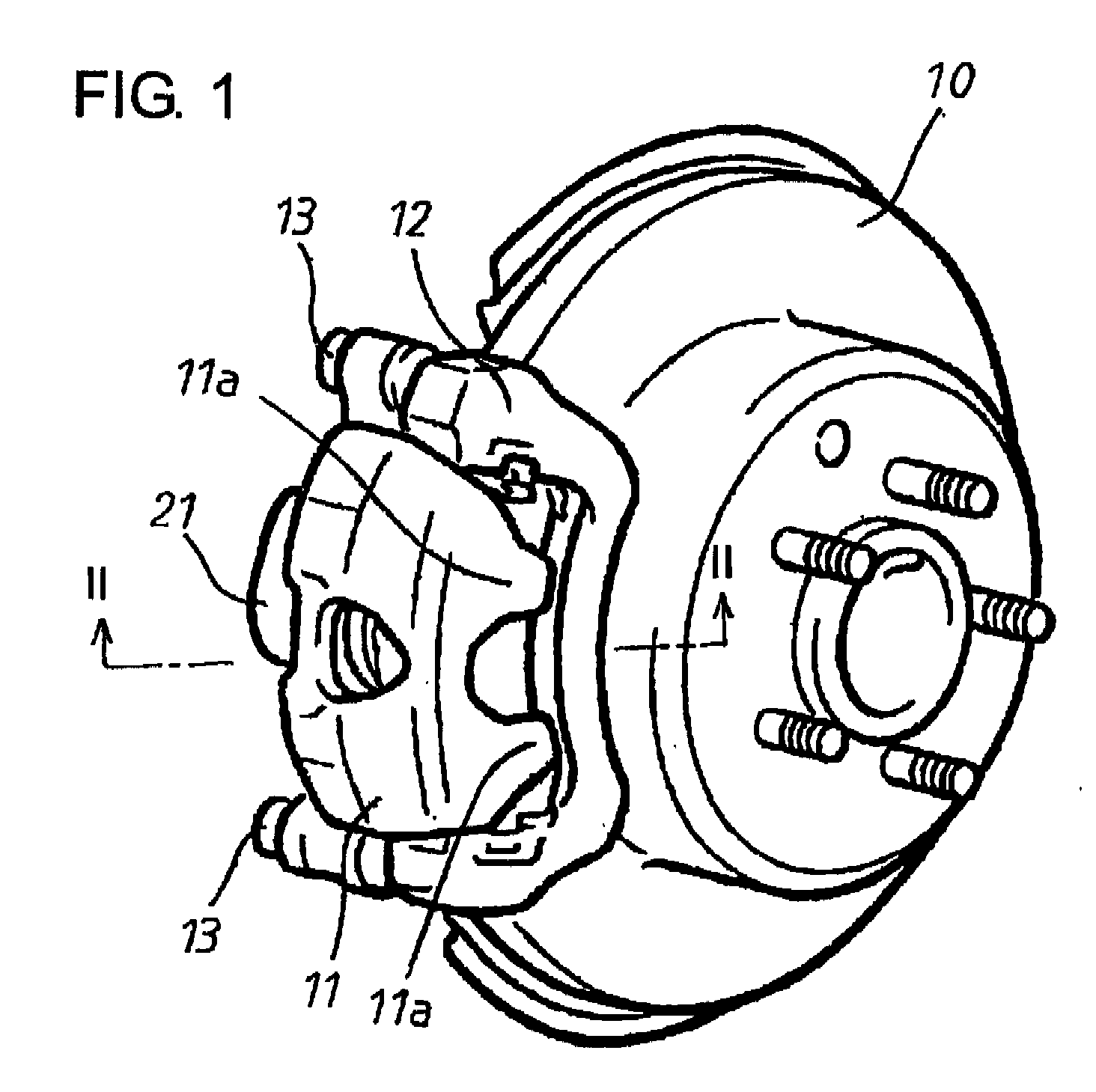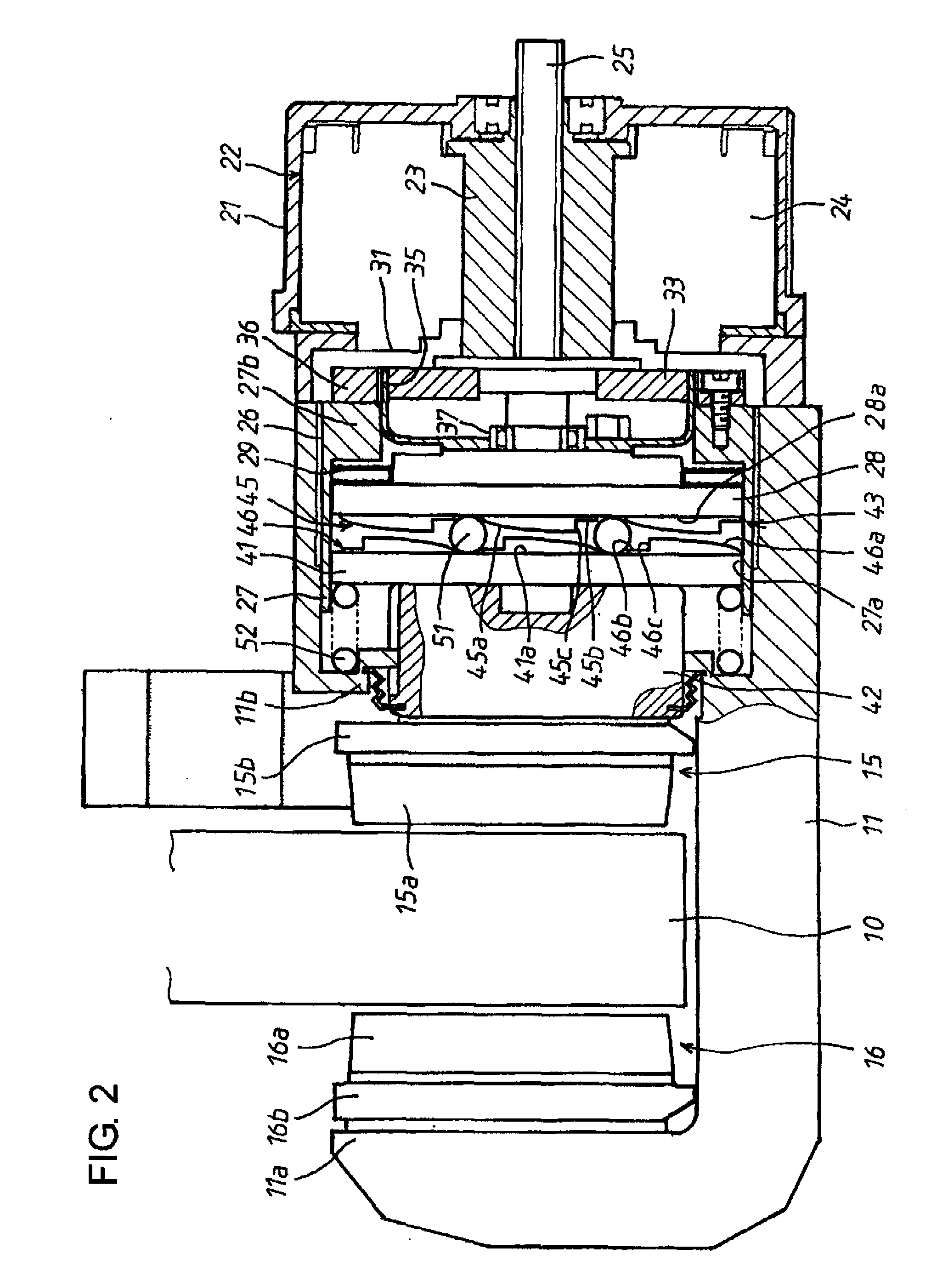Electric brake device
a technology of brake device and electric brake, which is applied in the direction of electrodynamic brake system, mechanical apparatus, transportation and packaging, etc., can solve the problem that the electric brake device becomes unsusceptible, and achieve the effect of achieving the responsibility of braking performan
- Summary
- Abstract
- Description
- Claims
- Application Information
AI Technical Summary
Benefits of technology
Problems solved by technology
Method used
Image
Examples
first embodiment
[0028]Hereafter, an electric brake device in a first embodiment according to the present invention will be described with reference to FIGS. 1 to 7. Referring now to FIGS. 1 and 2, numeral 10 denotes a brake rotor of the electric brake device, and the brake rotor 10 is bodily attached to a wheel of an automotive vehicle (both not shown) incorporating the electric brake device. At a part of the circumferential surface of the brake rotor 10, a caliper 11 taking a U-shape in cross-section is arranged to be astride the brake rotor 10. The caliper 11 is supported by a mount member 12 secured on a vehicle body side, through a pair of slide pins 13 and is movable by a short distance in the axial direction of the brake rotor 10.
[0029]A pair of first and second brake pads 15, 16 as braking members are arranged to face opposite sides of the brake rotor 10 in the axial direction. The first brake pad 15 arranged inside of the brake rotor 10, that is, on the vehicle body side is attached to a pr...
second embodiment
[0066]FIG. 8 shows a second embodiment according to the present invention. The difference from the first embodiment is that in the first embodiment, the friction resistance at the screw engagement between the screw hole 26 of the caliper 11 and the screw member (thrust force support member) 27 works to hold the screw member 27 in a stationary state, whereas in the second embodiment, there is separately provided an operation resistance application mechanism for positively applying operation resistance to the screw member 27, so that the screw member 27 can be reliably held in the stationary state. Therefore, hereinafter, description will be made mainly regarding the differences from the first embodiment, whereas description will be omitted regarding the components which are the same in construction and are given the same reference numerals as those in the first embodiment.
[0067]In FIG. 8, the screw member 27 is screwed into the screw hole 26 formed in the caliper 11. A screw compensa...
third embodiment
[0073]FIGS. 10 and 11 show a third embodiment according to the present invention. The difference from the foregoing second embodiment is that an operation resistance acting in radial directions is applied to the screw member 27.
[0074]Referring to FIGS. 10 and 11, storage pockets 71 (refer to FIG. 11) are formed in the flange portion 27b of the screw member 27 at, e.g., two places (preferably, two diametrically opposed places) in the circumferential direction. The storage pockets 71 open at the external surface of the flange portion 27b. Friction engaging pieces 72 of square shape are fitted respectively in the storage pockets 71 to be slidable in the radial directions only. Radial external surfaces of the friction engaging pieces 72 are formed as screw portions 72a which are screw-engaged with the screw hole 26 of the caliper 11. Springs 73 each comprising a coil spring as urging member are interposed between respective bottom portions of the storage pockets 71 and the friction enga...
PUM
 Login to View More
Login to View More Abstract
Description
Claims
Application Information
 Login to View More
Login to View More - R&D
- Intellectual Property
- Life Sciences
- Materials
- Tech Scout
- Unparalleled Data Quality
- Higher Quality Content
- 60% Fewer Hallucinations
Browse by: Latest US Patents, China's latest patents, Technical Efficacy Thesaurus, Application Domain, Technology Topic, Popular Technical Reports.
© 2025 PatSnap. All rights reserved.Legal|Privacy policy|Modern Slavery Act Transparency Statement|Sitemap|About US| Contact US: help@patsnap.com



